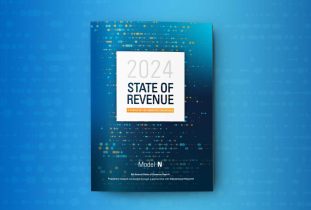Getting the Right Data to Build the Right Platform
In my previous article, I explained the top three factors to build a next-generation global pricing and market access capability and introduced the importance of re-thinking data. Data quality and compliance are the top two business challenges for pricing and commercial teams. Poor data quality hampers the decision-making capabilities of global and regional pricing managers. Commercial teams are not able to take quick and reliable decisions and lose the opportunity to protect their revenues. Moreover, they are not able to empower country affiliates to efficiently manage prices.
In this article, I will offer detailed information about design, implementation and ongoing maintenance of data management principles which enable building a pricing and market access capability to meet present day business challenges.
- Design Phase
- Eliminate price management processes for non-commercial reasons: Most organizations use Enterprise Resource Planning (ERP) / Master Data Management (MDM) systems as a system of record for product master data. However, these systems are designed for operational, manufacturing and logistics purposes and are NOT optimal for pricing, market access and commercial practices. One of the trigger factors behind poor data quality and inferior analytical capabilities is driven by non-value-added price management processes, such as:
- Logistical Operational processes introduce new SKUs for various non-commercial reasons. For example, a change of manufacturing plant, change of packaging, changes in bill of materials, import/export purposes, etc. These external events do NOT have an impact on the price. Approximately 15-20% of country pricing experts’ time is spent on updating the prices of products for non-commercial events.
- Countries have multiple SKUs for the same molecule for packaging reasons. For example, Universal English Pack, country language specific packs, etc. All of these multiple SKUs should have the same price. For any price change event, country pricing experts should update the prices for all similar SKUs. The maintenance of data (e.g. International Reference Pricing (IRP) event and price revision schedules) for duplicate SKUs introduce inefficiencies for pricing teams and creates additional workload during the price, revenue impact analysis during price review cycles. These unwanted duplicate efforts create data inconsistencies and inefficiencies, and limits the analytical capabilities that can be offered.
- Identify the missing data and processes: To build systematic and flexible IRP and global launch optimization capabilities, market access teams need to start creating new data management processes. Examples of these types of processes include regular update of country reference rules, collecting data on various market access plans for new launches, price revisions, submission dates, estimated volume forecasts and possible price ranges for launches. It is critical to identify the various interfaces required to/from other systems to eliminate any manual activities which can cause data quality issues.
- Identify the key analytics required for decision making support: As part of the system design, identify the key stakeholders (global, regional, country and cross functional users) to document all reporting and analytic needs. Additionally, it’s important to ensure that data model design is comprehensive to support those needs. Net price impact, gross/net revenue impact, reimbursement dashboard, competitor price comparison, market access dashboards, indication based pricing, price corridors and price certificates are all examples of the key analytics components required to make an informed decision.
- Eliminate price management processes for non-commercial reasons: Most organizations use Enterprise Resource Planning (ERP) / Master Data Management (MDM) systems as a system of record for product master data. However, these systems are designed for operational, manufacturing and logistics purposes and are NOT optimal for pricing, market access and commercial practices. One of the trigger factors behind poor data quality and inferior analytical capabilities is driven by non-value-added price management processes, such as:
- Implementation Phase
- New Data Management/Transformation Process: Based on the situation, you must either create a new master data management process in MDM/ERP systems or develop transformation logic required to convert the existing data into a new set of master data which suits commercial needs. This might require enhancements of the source systems (ERP/MDM) or introduction of ETL processes.
- Manage the mapping processes from logistical data to commercial data: Based on my experience with various engagements, the most complex and time-consuming part in the project to define rules is mapping conditions to create master data focusing on commercial needs. It is extremely important to consider all use cases (e.g.: multiple combination products, various dosage forms, multiple compound SKUS with different strengths) and define mapping rules accordingly. Furthermore, it’s necessary to ensure that there is proper mapping between the new and the old codes to enable downstream integrations.
- Master Data Governance Process: Though systems are designed to automate the master data creation/maintenance process, it is important to establish the governance and approval process to review the changes, event driven error correction process to keep the systems current. Include a data verification process as part of the go-live activity. Some projects showed data quality issues with up to 50% of records. This activity ensures that new platform is built with right quality data and avoids any issues with user adoption, credibility on the data/analytics.
- On-going Review Processes
- Implement Data Verification Processes: Even after redesigning the master data and implementing new governance processes, it is required to implement on-going data verification processes and ask country users to certify data, such as master data, reference rules, prices and market events. This eliminates any issues caused by external events like delays in references or price changes because of final negotiations.
- Implement Data Verification Processes: Even after redesigning the master data and implementing new governance processes, it is required to implement on-going data verification processes and ask country users to certify data, such as master data, reference rules, prices and market events. This eliminates any issues caused by external events like delays in references or price changes because of final negotiations.
In summation, it is vital to re-think end to end data management processes as part of building next generation global pricing and market access platform. Feel free to share your experience and thoughts in the comments section. Contact me at vvidiyala@modeln.com for more information.
















